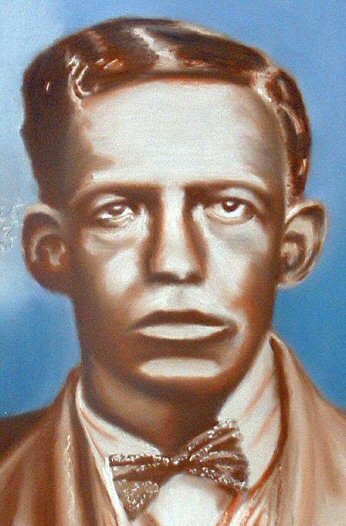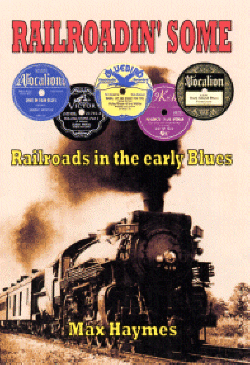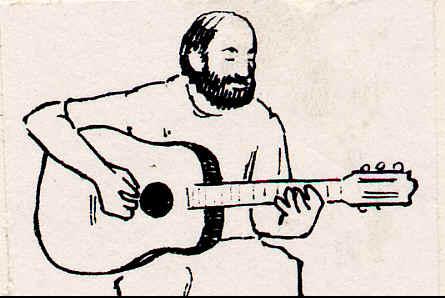
Painting © 2004 Loz
Arkle
Website
© Copyright 2000-2011 Alan White - All
Rights Reserved
Site optimised for Microsoft Internet Explorer



Background to the Blues |
The reality of life for
working-class blacks in the Southern states of the USA – putting the lyrics of
the early blues into perspective.
The first blacks landed in
Jamestown, Virginia in 1619 as Indentured Servants. At this time there were also
many white British indent servants, often ex convicts, as well as enslaved
native Americans. It was the whites who cleared most of the land for the
plantations of tobacco, rice, indigo, etc. but these labour-intensive crops were
later tilled mainly by black slaves after 1660. After the
British Navigation
Acts of 1660 forced tobacco prices up in Virginia and Maryland, many plantation
owners were unable to keep white labour, and resorted to enslaving blacks in the
colonies and importing more slaves from West Africa. Tribes were selected for
their sedentary way of life as crop-growers and rearing of livestock, such as
the Arada, Dahomey and Fulani tribes, rather than those who were nomadic hunters
and more war-like; as were the Hausa tribe for example. There ensued a ‘Triangle
slave trade’: from England, ships with goods sailed to West Africa to exchange
the goods for slaves and then went on to the West Indies and America to exchange
the slaves for money or goods which were then returned back to England. Horrific
conditions prevailed for slaves and crew in the 'Middle Passage' across the
Atlantic. On arrival in Virginia tribes and even families were split up.
Communicating instruments such as drums and horns were banned. Despite this
slaves' nature, customs, language, dress and particularly their songs lived on.
Songs would be sung at their work to help make the days go by. Slaves soon
spread southwards to the territories of Carolina (later North and South
Carolina), Georgia, Mississippi (later Mississippi and Alabama), and Louisiana. Plantation slaves were divided
into two categories: House and Field Slave and it was from the latter that the
blues originated. Slaves made their
own music from their environment (e.g. the quills/syrinx) They had also brought
an early version of the banjo from Africa. They also adopted the European
Fiddle. Slave songs were also influenced by the spread of Christianity
introduced into the South by 1750 and in the early 1800s the first black
churches were established. In 1793,
Eli Whitney's cotton
gin appeared which separated fibre from the seed – and this was so improved by
the 1820's that cotton became 'king', especially in the Mississippi Delta
,Alabama and Georgia. The slaves were put to work picking the cotton. From 1830 onwards the Southern
railroads were built. Again it was the slaves who were put to work labouring for
the railroad companies. Picking cotton and labouring
on the railroads became two of the most important themes in the blues. The slave
songs evolved to reflect the toil and pain of the slavery. From these slaves
came the children who grew up to become the great early blues singers and
musicians (see 'Panama Limited' by Bukka White). During the
American Civil War
(1861-65) the ‘Emancipation Proclamation’ was declared by Abraham Lincoln
(1863). However the South still needed black labour to do the menial work that
the whites wouldn’t do. Then came the Reconstruction Era with reforms in
political and social areas, which were monitored by the presence of Federal
Troops. At this time the blacks got the vote. Then came the 'crop-lien system'
and convict-leasing developed to keep blacks under control upsetting Federal
authorities. In 1877, the Hayes Compromise
was agreed. Troops left the South on the
promise of the Southern States to adhere to the 13th and 15th
Amendments relating to equality for black citizens. From 1877 to 1900 came the
Post-Reconstruction Era which was a white backlash especially from poor whites.
Segregation
'Jim Crow'
laws were introduced with the cry of 'Separate but
equal'. However by 1900 this meant poor housing, education, job opportunities
and total disenfranchisement of blacks. To prevent equality, ludicrous 'tests'
were introduced, such as literacy tests, at a time when 97% of blacks were
illiterate. Even worse was the so-called 'Grandfather Clause' where a black
could claim equality if his grandparents had been free. Strong all-white trade
unions kept blacks out of skilled employment and there was a resurgence of the KKK and increased lynchings of black citizens. Peonage spreading and
the sharecropping (crop-lien) system kept blacks in virtual slavery. This era,
one popular school of thought has it, was the real birth of the blues. In the 1880s the lumber and
turpentine industries were expanding in states such as Mississippi, Georgia,
North Carolina and northern Florida. In Alabama, coal iron and steel were being
processed and manufactured. Workers in these industries were predominately
black, as well as the track workers, porters and labourers on the railroads in
the levee camps along the lower
Mississippi River
and in mining camps in
Kentucky and Pennsylvania. These jobs included the most dangerous and unhealthy
work, which most white workers refused to do for any length of time. By the 1890s the most popular black church opened, the Church Of God In Christ (C.O.G.I.C.) beginning in the state of Mississippi. Many gospel singers, who were also influenced by the blues were members of the C.O.G.I.C. such as Bessie Smith. At this time travelling medicine shows, circuses and tent shows were all over the South. This minstrel tradition ran from the 1820s to 1860s. These shows, like the cotton, lumber, and coal industries, travelled wholly by rail on lines such as the Illinois Central (I.C.), Mobile & Ohio (M. & O.), Baltimore & Ohio (B. & O.), etc. which all featured in the lyrics of the early blues. Further Reference: Copyright © 2000 Max Haymes. All Rights Reserved. Thanks to the kids at 'Enriching Kids' for letting me
know about a missing link on this page (now corrected) and the link to American
Civil War resources.
Website © Copyright 2000-2014 Alan White. All Rights Reserved. |





